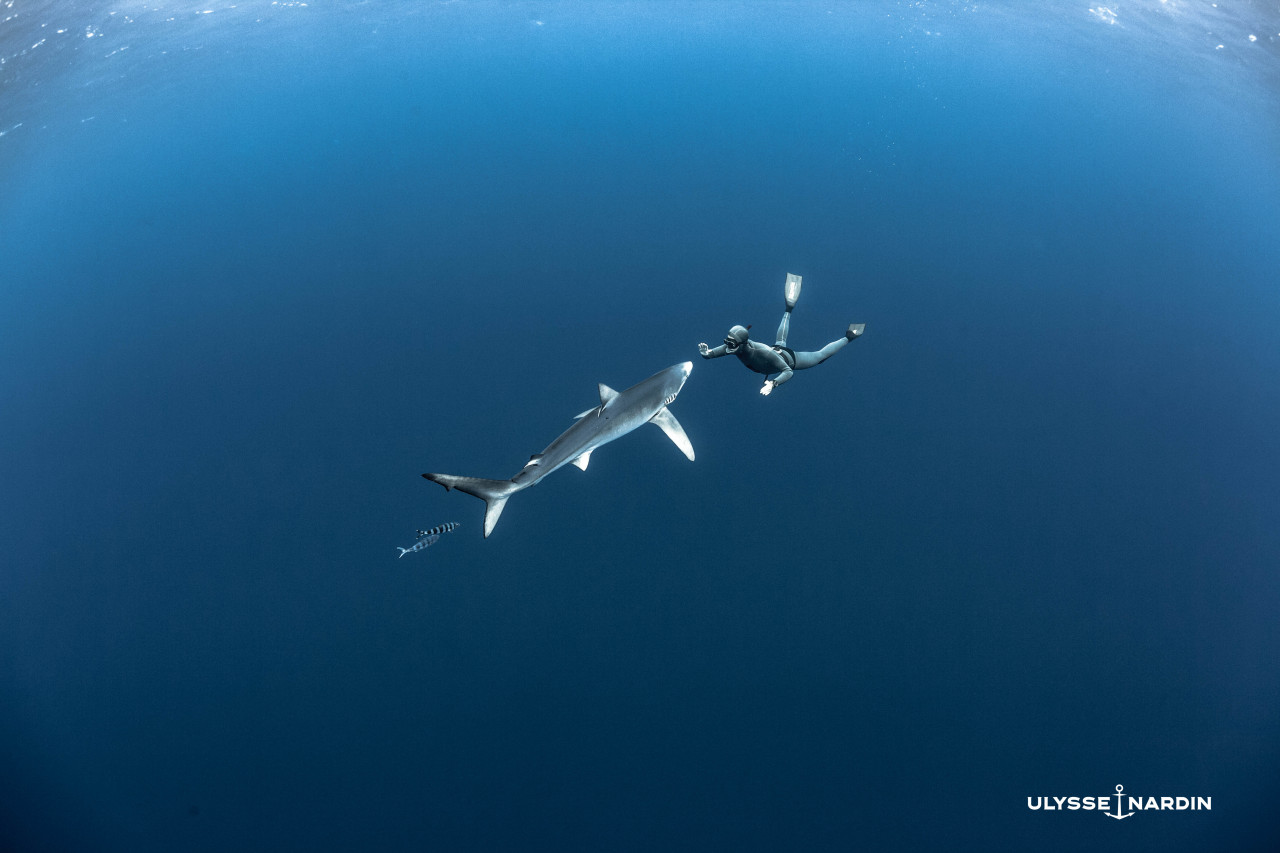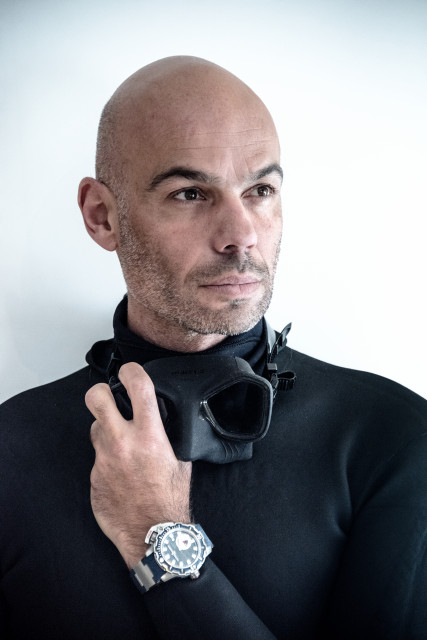The Azores by Fred Buyle, Ulysse Nardin ambassador

Diver, three-time freediver world record holder, Fred Buyle is a seabed explorer. Close to the nature, he photographs shakes around his wonderful archipelago: The Azores.
"I call The Azores my home. Azores comes from açor, “goshawk”– a bird of prey –in Portuguese.
The rich marine life in the waters surrounding this archipelago of 9 volcanic islands is a never-ending source of fascination for me. The Azores form an autonomous region of Portugal in the North Atlantic located above an active triple junction between the North American, Eurasian, and African tectonic plates. Some volcanic areas here are still active.
The climate is mild for a northerly location on account of the distance from the mainland and the Gulf Stream – perfect for the diving I do here.
There is a significant variety in geomorphology among the islands, from rocky, rugged Flores to sandy, eroded Santa Maria. Many seamounts, submarine reefs, and banks characterize the region, and harbor a wide variety of sea-life. The Azorean Marine Park, a protected area, covers 900,000 km2. and is one of the most magnificent, magical underwater universes I have ever seen I the waters of this beautiful, blue planet.
The Islets of the Formigas (“ants”) and Dollabarat Reef are particularly rich in marine life. Black coral, manta rays, sperm whales, a variety of dolphins and other whales, loggerhead and leatherback turtles, ocean sunfish, blue sharks, blue and white marlin, tuna, grouper, and moray eels are among the sea fauna that populate the waters around the Azores. Known for small hurricanes, there are some natural, extreme temperature environments around volcanic hydrothermal vents and underwater volcanoes, black smokers, etc. The Azores has a unique biome, although I can testify that it has sadly been much destroyed by human activity.
Like Iceland, The Azores have seen new islands born within historical memory: in 1720 a new island (creatively named “Ilha Nova,” or “New Island”) emerged after an eruption on the Dom João de Castro Bank, but disappeared beneath the waves in 1722. Its existence was debated until it was located underwater and mapped during WWII.
Horta, an important port located on the island of Faial, is a mythical stopover point for sailors crossing the Atlantic. Often called “the most colorful marina in the world”, Horta is also a meeting point for many international sailing events, including Les-Sables-Les Azores-Les Sables (mini 6.5). The Peter Café Sport, a maritime bar that has been owned and operated by the same family for over a century, is a well-known institution in the Azores. Founded by Enrique Azevedo in 1918, the Café Sport is not only a bar but a museum dedicated to the Azevedo family’s love of the ocean, whales and the islands themselves."
diving with large predators

I love diving with large predators and helping scientists with tagging animals and taking DNA samples. As an underwater photographer, the coolest thing that I have ever seen while freediving was the birth of a sperm whale in the Azores, surrounded by 30 whales celebrating the birth."
Teams info
After a stunning 2025 season Sam Goodchild is the IMOCA Globe Series Champion for the second time
After a long season at the top of the IMOCA fleet that featured three race wins, Great Britain’s Sam Goodchild is for the second time in three years the IMOCA Globe Series Champion.
•••Quel rôle peut jouer la course au large dans la transformation du transport international ? Avec Pie…
Pour ce 10ᵉ épisode de Transitions, enregistré au Havre lors du départ de la Transat Café L'Or, nous recevons Jeremy Pochman, PDG de 11th Hour Racing, et Pierre-Antoine Morvan, responsable du pôle course au large et supe…
•••